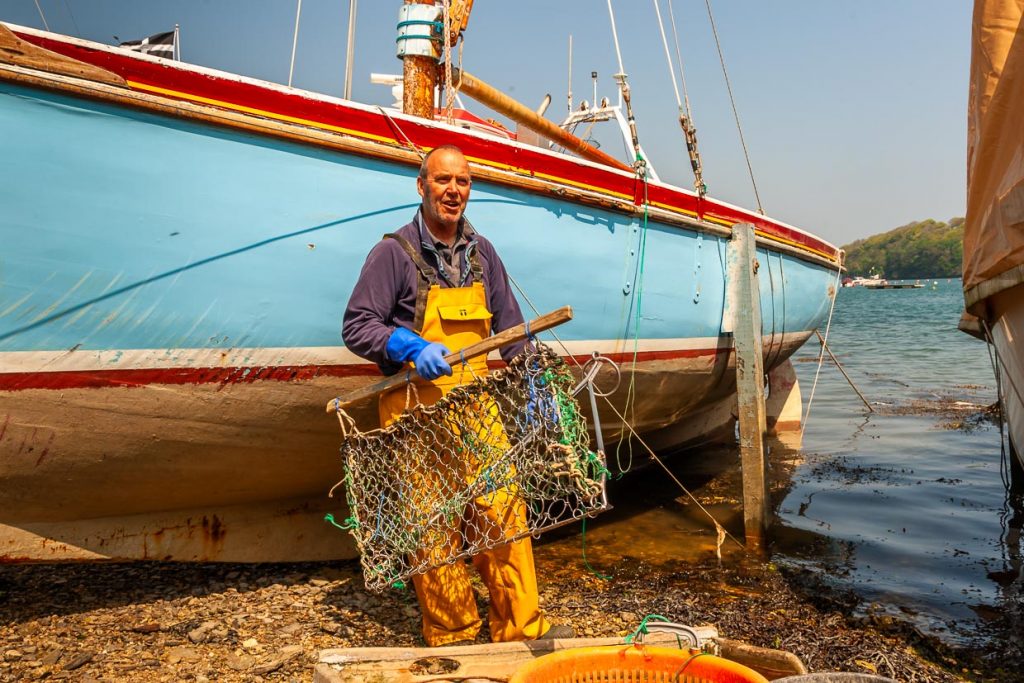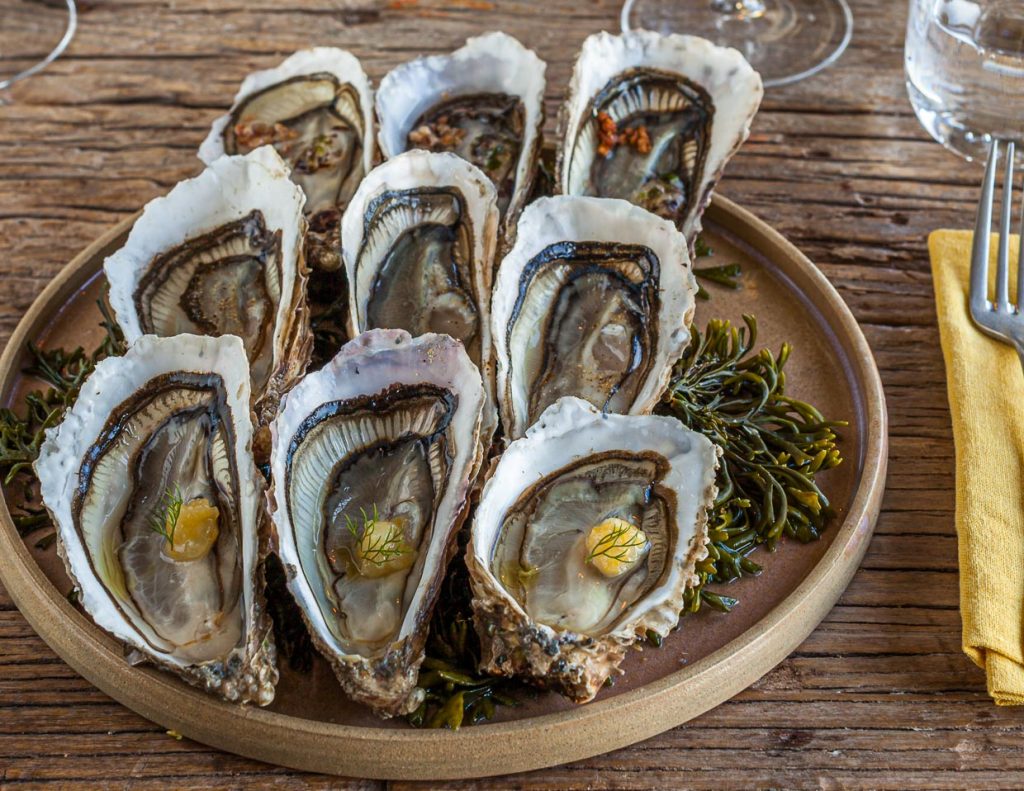Oysters can be eaten all year round. The R-rule does not apply to them as it does to mussels. Oysters contain a lot of omega-3 fatty acids, are low in calories and rich in iron, zinc, magnesium, calcium and vitamins A,B C and D. So much for the hard facts of the nutrition tables. To begin with, oysters are microscopic. Many are eaten by snails. They are not harvested until they reach grade 1, which is 60 to 80 g oysters. Grade 2 oysters weigh up to 100 g and grade 3 over 100 g. To reach 100 g, a wild oyster must be 4 to 5 years old.

Oystercatcher James Brown
There aren’t many men left on the Cornish coast who want to do this tough job. James Brown – that’s his real name – is an oyster fisherman. Approaching the wild native oysters in their natural environment by sailboat and harvesting them using ancient fishing methods is his job. James Brown’s fishing ground stretches along the steep and rugged shores of the Fals River estuary. Here, the salty tidal waters of the Atlantic meet the mineral-rich fresh waters of the Fals. It gives the oysters their sweet and slightly metallic taste.
The first oyster
There is much to discover about the taste of an oyster. The finely balanced salty freshness of an oyster should be celebrated whenever it arises. Especially if you are in an area where oysters are as common as currywurst is in our country. Oysters are invigorating and energizing, a bit like the primordial sea from which all life originated. It is recommended to chew them for a long time, instead of swallowing them in fright and quickly. But, and I admit this, it does not look beautiful, the inner life of an oyster.

Consider the Oyster
For those who prefer to approach the oyster theoretically, I recommend MFK Fisher’s little book from 1941 Consider the Oyster. The fact that eating the first oyster has always been an overcoming experience is also described by the American author in an episode of her book “The Art of Eating, Guide to Pleasure”. John Updike called Mary Frances Kennedy a “poetess of appetite.” She wrote for the New Yorker, won many awards, and was an institution of American cultural life.
A certain restlessness spread. We behaved in an exemplary manner, but I know I was not the only one who was afraid to eat her first raw oyster. I remembered that Mother had said that oysters were tasteless, and also extremely unpleasant, and that one should therefore swallow them without thinking and as quickly as possible, for the aftertaste was quite pleasant.
MFK Fisher, The Art of Eating, Sixth Course, The First Oyster
Other aspects: Oyster farming in France, oyster fishing in Cornwall, preparation oysters, history of oysters.
Material
Our works are inspired by human encounters and always culinary discoveries. What format do you need? A newsworthy report, an entertaining reportage, a short travel tip or a picture gallery? At the international photo agency Alamy you can view all the photos of Georg Berg on the subject of oysters and oyster farming. Clicking on one of the images below will take you directly to the agency image.










